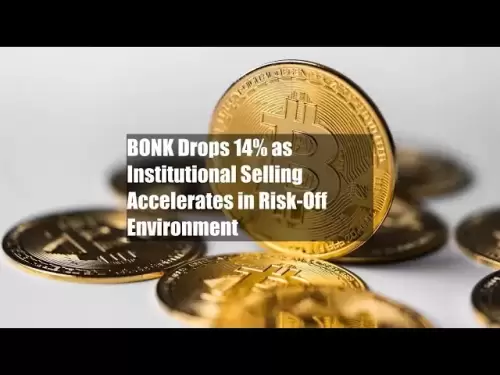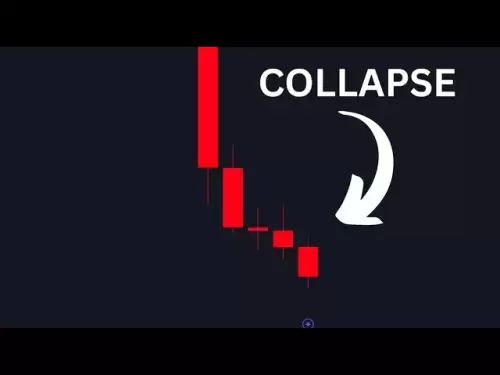-
 Bitcoin
Bitcoin $112400
-1.07% -
 Ethereum
Ethereum $3409
-3.27% -
 XRP
XRP $2.784
-6.60% -
 Tether USDt
Tether USDt $0.9997
-0.03% -
 BNB
BNB $739.3
-2.09% -
 Solana
Solana $158.0
-2.90% -
 USDC
USDC $0.9998
-0.02% -
 TRON
TRON $0.3213
-0.94% -
 Dogecoin
Dogecoin $0.1929
-5.01% -
 Cardano
Cardano $0.6974
-2.82% -
 Hyperliquid
Hyperliquid $36.69
-2.31% -
 Sui
Sui $3.327
-4.80% -
 Stellar
Stellar $0.3672
-5.18% -
 Chainlink
Chainlink $15.65
-3.07% -
 Bitcoin Cash
Bitcoin Cash $525.0
-1.68% -
 Hedera
Hedera $0.2291
-6.00% -
 Avalanche
Avalanche $20.91
-2.96% -
 Ethena USDe
Ethena USDe $1.000
0.00% -
 Toncoin
Toncoin $3.520
-1.12% -
 UNUS SED LEO
UNUS SED LEO $8.968
0.14% -
 Litecoin
Litecoin $105.7
0.26% -
 Shiba Inu
Shiba Inu $0.00001181
-1.79% -
 Polkadot
Polkadot $3.492
-2.08% -
 Uniswap
Uniswap $8.800
-3.10% -
 Dai
Dai $0.9999
-0.01% -
 Monero
Monero $289.9
-3.17% -
 Bitget Token
Bitget Token $4.243
-1.27% -
 Pepe
Pepe $0.00001006
-3.67% -
 Cronos
Cronos $0.1248
-5.68% -
 Aave
Aave $249.7
-2.50%
Are there specific market indicators you need to know to buy a Bitcoin ETF?
Before investing in a Bitcoin ETF, analyze Bitcoin's price trends, trading volume, regulatory environment, market sentiment, macroeconomic factors, on-chain metrics, and mining difficulty.
Mar 27, 2025 at 05:57 am
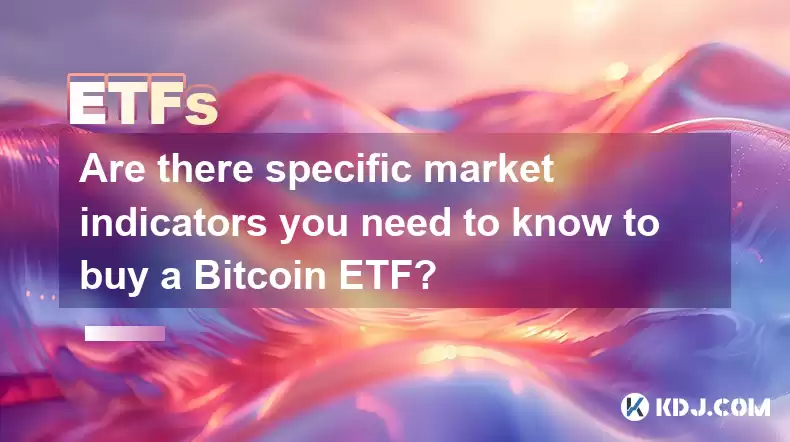
Navigating the Bitcoin ETF Landscape: Key Market Indicators
The launch of a Bitcoin ETF (Exchange-Traded Fund) is a highly anticipated event in the cryptocurrency world. Before investing, however, understanding relevant market indicators is crucial. This isn't just about Bitcoin's price; a holistic view of the market is necessary. Ignoring broader market trends could lead to poor investment decisions.
A Bitcoin ETF will track the price of Bitcoin, but its success also depends on the overall sentiment towards cryptocurrencies and the broader financial markets. Therefore, analyzing several indicators is essential before committing your capital.
Understanding Bitcoin's Price Action
The most obvious indicator is Bitcoin's price itself. However, simply looking at the current price is insufficient. Analyzing price trends, using tools like moving averages and relative strength index (RSI), provides a better understanding of potential momentum and overbought/oversold conditions. Long-term trends, particularly the overall trajectory of Bitcoin's price over several years, are more significant than short-term fluctuations. Consider charting tools and technical analysis to gauge potential support and resistance levels.
Analyzing Bitcoin's trading volume is equally important. High trading volume accompanying a price increase suggests strong buying pressure, while low volume may indicate a weaker trend. Conversely, high volume during a price drop signals significant selling pressure. Volume analysis helps confirm price trends and identify potential reversals.
Assessing the Regulatory Environment
The regulatory landscape surrounding cryptocurrencies significantly impacts Bitcoin ETFs. Positive regulatory developments, such as the approval of a Bitcoin ETF by a major regulatory body, can drive substantial price increases. Conversely, negative news or regulatory uncertainty can lead to price corrections. Staying informed about regulatory announcements and their potential impact is paramount. This includes following news from the SEC (Securities and Exchange Commission) in the US and equivalent bodies in other jurisdictions.
Gauging Market Sentiment
Market sentiment, the overall feeling of investors towards Bitcoin and the cryptocurrency market, is a powerful indicator. This can be gauged through social media sentiment analysis, news articles, and the overall tone of discussions within the cryptocurrency community. Positive sentiment often precedes price increases, while negative sentiment can trigger sell-offs. However, relying solely on sentiment analysis can be risky; it's best used in conjunction with other indicators.
Considering Macroeconomic Factors
Bitcoin's price is also influenced by macroeconomic factors. Interest rate hikes, inflation rates, and overall economic growth significantly impact investor behavior and risk appetite. A strong economy often leads to increased investment in riskier assets like Bitcoin, while economic uncertainty can cause investors to move towards safer havens. Understanding macroeconomic trends and their potential impact on Bitcoin's price is crucial.
Analyzing On-Chain Metrics
On-chain data provides insights into the underlying activity on the Bitcoin blockchain. Metrics like the number of active addresses, transaction fees, and the miner's revenue can reveal valuable information about network activity and investor behavior. Increased on-chain activity often suggests growing adoption and potential price appreciation. However, interpreting on-chain data requires expertise and a deep understanding of blockchain technology.
The Role of Bitcoin Mining Difficulty
Bitcoin's mining difficulty adjusts periodically to maintain a consistent block generation time. A rising difficulty suggests a growing number of miners are competing for block rewards, which can be a positive sign for the network's security and overall health. Conversely, a decreasing difficulty might indicate a decline in mining activity. Monitoring mining difficulty provides insight into the network's long-term sustainability.
Steps to Consider Before Investing in a Bitcoin ETF
- Research thoroughly: Understand the specific ETF, its underlying assets, and its expense ratio.
- Diversify your portfolio: Don't put all your eggs in one basket. Allocate only a portion of your investment to Bitcoin ETFs.
- Set a budget: Determine how much you are willing to invest and stick to your plan.
- Dollar-cost averaging: Consider investing regularly over time rather than making a large lump-sum investment.
- Monitor your investments: Regularly review your portfolio's performance and adjust your strategy as needed.
- Understand the risks: Bitcoin ETFs are subject to market volatility and other risks.
Frequently Asked Questions
Q: What is a Bitcoin ETF?
A: A Bitcoin ETF is an exchange-traded fund that tracks the price of Bitcoin. It allows investors to gain exposure to Bitcoin without directly owning the cryptocurrency.
Q: Are Bitcoin ETFs regulated?
A: The regulatory landscape for Bitcoin ETFs varies by jurisdiction. In some regions, they are regulated as securities, while in others, the regulatory framework is still developing.
Q: What are the risks of investing in a Bitcoin ETF?
A: Investing in a Bitcoin ETF carries risks associated with the volatility of Bitcoin's price, regulatory uncertainty, and potential security breaches.
Q: How do I buy a Bitcoin ETF?
A: You can typically buy Bitcoin ETFs through a brokerage account that offers access to exchange-traded products. The specific process will depend on your brokerage and the ETF you choose.
Q: What are the benefits of investing in a Bitcoin ETF compared to directly owning Bitcoin?
A: Bitcoin ETFs offer convenience, regulatory compliance (in regulated markets), and potentially lower transaction costs compared to directly buying and storing Bitcoin.
Disclaimer:info@kdj.com
The information provided is not trading advice. kdj.com does not assume any responsibility for any investments made based on the information provided in this article. Cryptocurrencies are highly volatile and it is highly recommended that you invest with caution after thorough research!
If you believe that the content used on this website infringes your copyright, please contact us immediately (info@kdj.com) and we will delete it promptly.
- Ruvi AI: The AI Token on Cardano Set to Dominate After CMC Listing
- 2025-08-03 04:50:12
- Altcoins in the Spotlight: Cardano, Shiba Inu, and the Quest for Crypto Supremacy
- 2025-08-03 05:30:12
- Litecoin, USDC, and Mining in 2025: A New Yorker's Take
- 2025-08-03 05:50:12
- Bitcoin, MicroStrategy, and Institutional Confidence: A Bullish Trifecta?
- 2025-08-03 04:30:12
- Ruvi AI Token: Price Hike Imminent After Presale Milestone?
- 2025-08-03 04:30:12
- Ruvi AI: The Millionaire Maker with a Price Spike on the Horizon?
- 2025-08-03 02:50:12
Related knowledge
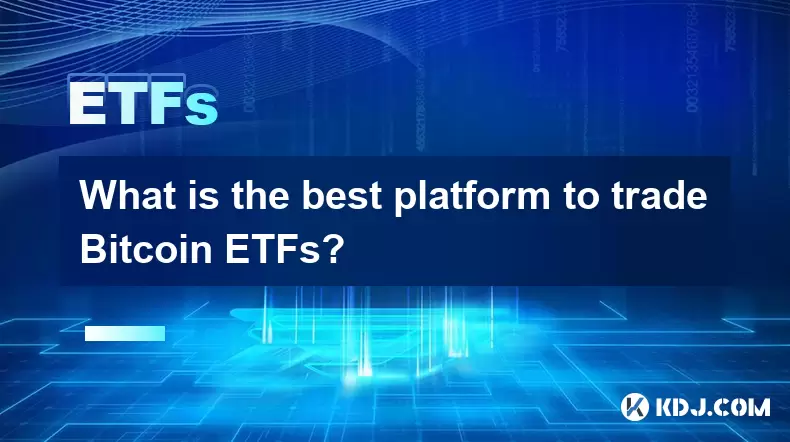
What is the best platform to trade Bitcoin ETFs?
Jul 23,2025 at 04:14am
Understanding Bitcoin ETFs and Their Role in TradingBitcoin Exchange-Traded Funds (ETFs) have gained significant traction among traditional and crypto...
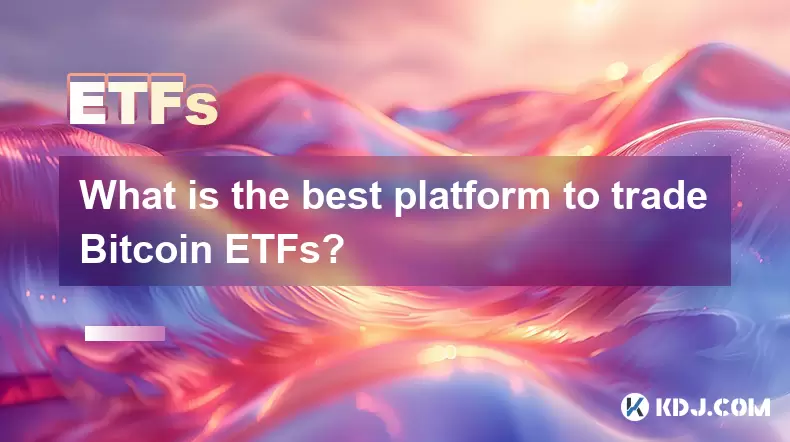
What is the best platform to trade Bitcoin ETFs?
Jul 17,2025 at 03:50pm
Understanding Bitcoin ETFs and Their Role in the MarketBitcoin Exchange-Traded Funds (ETFs) are investment vehicles that track the price of Bitcoin wi...

Will a Bitcoin ETF be available in my 401(k)?
Jul 17,2025 at 10:42pm
What is a Bitcoin ETF?A Bitcoin ETF (Exchange-Traded Fund) is an investment vehicle that tracks the price of Bitcoin without requiring investors to di...
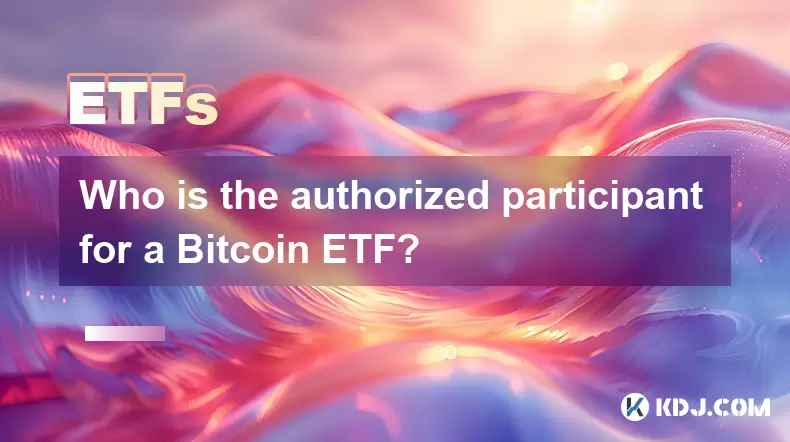
Who is the authorized participant for a Bitcoin ETF?
Jul 18,2025 at 12:42am
Understanding the Role of Authorized Participants in Bitcoin ETFsIn the context of Bitcoin Exchange-Traded Funds (ETFs), an authorized participant (AP...
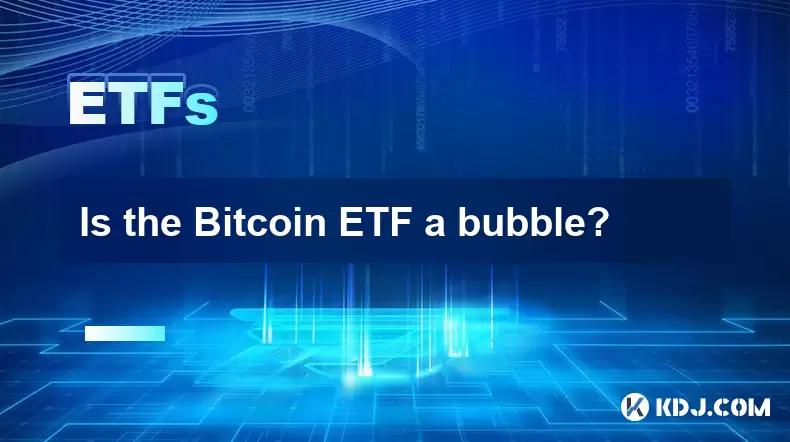
Is the Bitcoin ETF a bubble?
Jul 20,2025 at 06:57am
Understanding the Bitcoin ETF ConceptA Bitcoin Exchange-Traded Fund (ETF) is a financial product that aims to track the price of Bitcoin without requi...
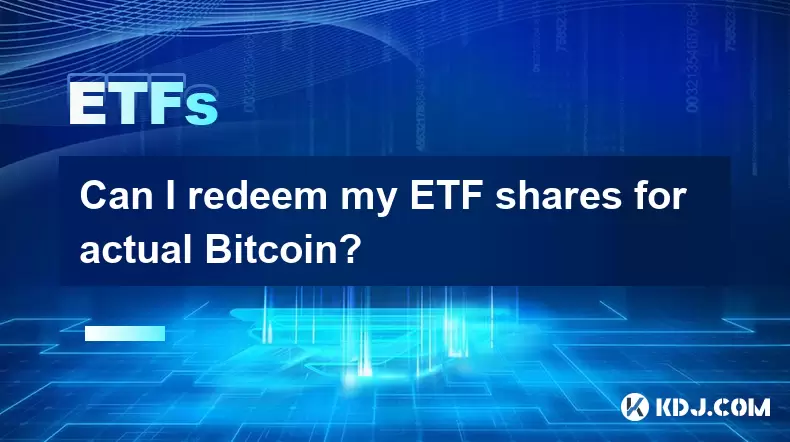
Can I redeem my ETF shares for actual Bitcoin?
Jul 17,2025 at 03:14pm
Understanding ETF Shares and Their Relation to BitcoinExchange-Traded Funds (ETFs) have become a popular investment vehicle for those looking to gain ...

What is the best platform to trade Bitcoin ETFs?
Jul 23,2025 at 04:14am
Understanding Bitcoin ETFs and Their Role in TradingBitcoin Exchange-Traded Funds (ETFs) have gained significant traction among traditional and crypto...

What is the best platform to trade Bitcoin ETFs?
Jul 17,2025 at 03:50pm
Understanding Bitcoin ETFs and Their Role in the MarketBitcoin Exchange-Traded Funds (ETFs) are investment vehicles that track the price of Bitcoin wi...

Will a Bitcoin ETF be available in my 401(k)?
Jul 17,2025 at 10:42pm
What is a Bitcoin ETF?A Bitcoin ETF (Exchange-Traded Fund) is an investment vehicle that tracks the price of Bitcoin without requiring investors to di...

Who is the authorized participant for a Bitcoin ETF?
Jul 18,2025 at 12:42am
Understanding the Role of Authorized Participants in Bitcoin ETFsIn the context of Bitcoin Exchange-Traded Funds (ETFs), an authorized participant (AP...

Is the Bitcoin ETF a bubble?
Jul 20,2025 at 06:57am
Understanding the Bitcoin ETF ConceptA Bitcoin Exchange-Traded Fund (ETF) is a financial product that aims to track the price of Bitcoin without requi...

Can I redeem my ETF shares for actual Bitcoin?
Jul 17,2025 at 03:14pm
Understanding ETF Shares and Their Relation to BitcoinExchange-Traded Funds (ETFs) have become a popular investment vehicle for those looking to gain ...
See all articles





















